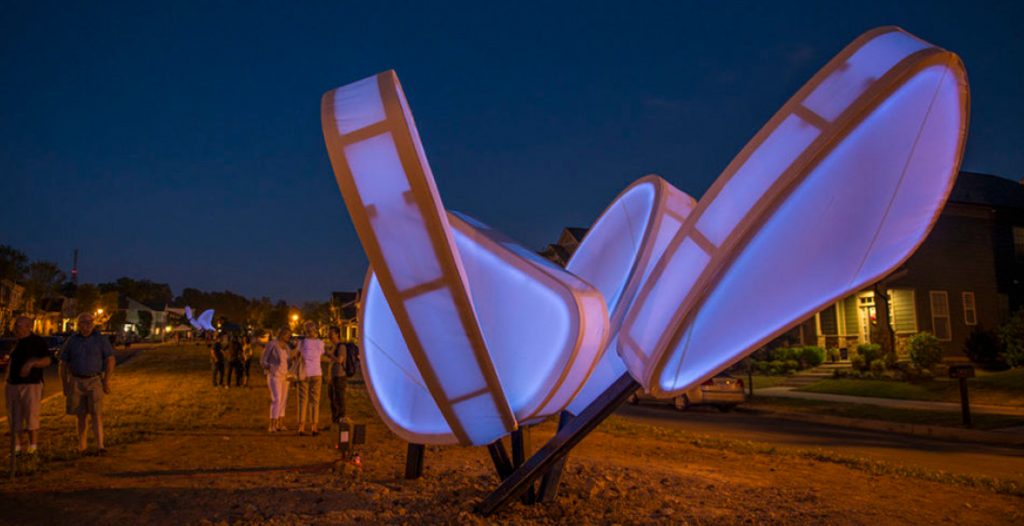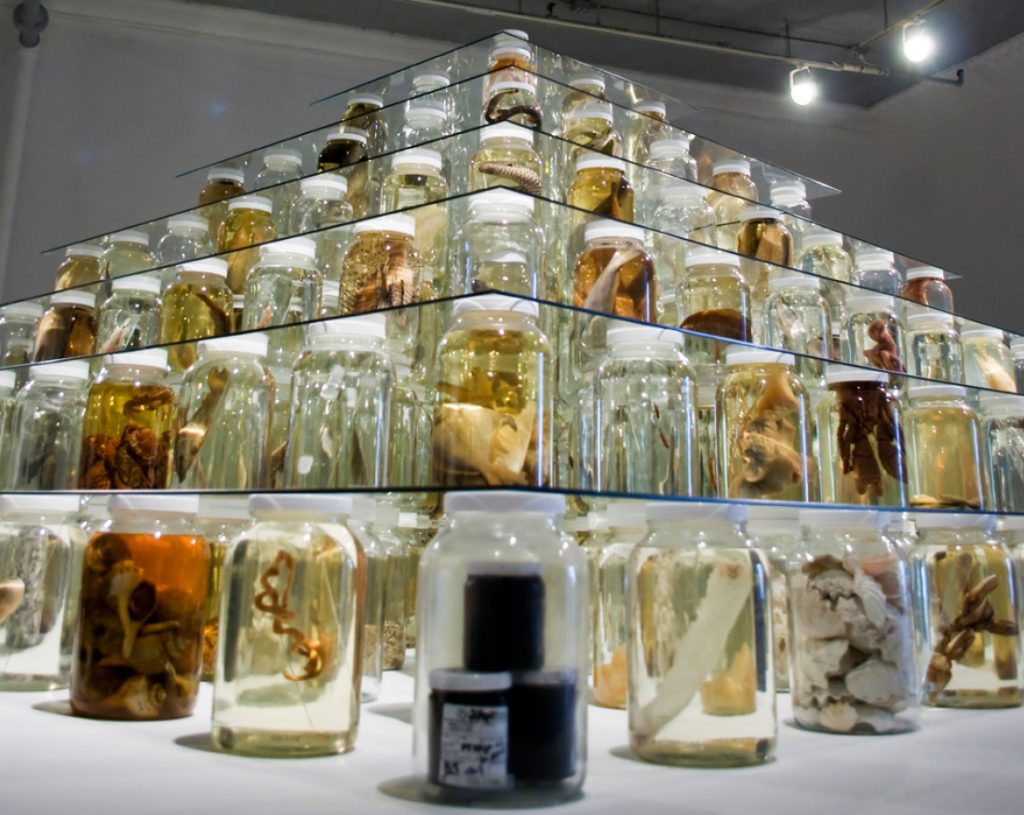Lake Charles Mayor Nic Hunter is only one of a number of Louisiana figures who are questioning the amount of federal disaster relief recently allotted to Southwest Louisiana. The total amount of federal relief approved by Congress was $29 billion. But that figure is for nationwide disaster relief. Southwest Louisiana will get a certain percentage from a fund set up by the relief provisions that will total $5 billion. Again, that figure is for nationwide relief; SWLA will get part of it. Hunter thinks the amount that eventually makes its way here will amount to something like $600 million.

The Capitol One building stands unrepaired because of a dispute between the owner, Hertz Investment Group, which says damage to the building amounted to more than $130 million, and the insurance agent, Zurich American, which says it’s only paying out $23 million.
Hunter shot from the hip in his comments about the paltry relief package: “It’s pretty sad that we’ve been waiting 13 months and this is our first bite at the apple. It’s a pretty rotten apple.”
Calcasieu Parish Police Jury President Brian Abshire was equally direct: “This feel-good bill makes no one but the federal politicians actually feel good, and will do very little for Calcasieu Parish.” To get more information about the state of the area’s economy, just keep reading.
Rally Point Of Recovery
There was a little Twitter storm recently when LSU economist Loren Scott gave his regular talk on the local economy at the SEED center. “This is the only metropolitan area I know of — of your size — in the country that’s actually worse off today than you were in April of 2020,” he said. “That is really a stunning thing.”
Of course, SWLA is also the only metropolitan area that was hit by two consecutive hurricanes. Ongoing problems continue to be the slow recovery rates, high housing and rental costs and lack of federal disaster aid.
The Advocate’s Mike Smith may have noticed the slow pace of local media coverage of hurricane recovery efforts and seen an opportunity. At any rate, for some time now he’s been sending out a weekly newsletter about the Lake Area. A recent story (“From a music hall to the port, Lake Charles economy fights to recover a year after Laura”) offers an outstanding overview of the status of the economy in these parts.
Among the information Smith reports is the fact that “around a fifth of businesses in Lake Charles did not renew their occupational licenses for this year, the city says.”
Rebuilding efforts have been hampered by snags in the supply lines of building materials that have been caused by COVID demands and restrictions. And each day, Smith notes, the worker shortage is extended by the lack of affordable housing in the area.
He focuses on a few recovery success stories as well as a few instances of recovery going nowhere. The Capitol One building, he reports, stands unrepaired because of a dispute between the owner, Hertz Investment Group, which says damage to the building amounted to more than $130 million, and the insurance agent, Zurich American, which says it’s only paying out $23 million.
Hertz sued Zurich. No one knows where the lawsuit stands now. Neither company returned The Advocate’s requests for comments. That may mean that both companies simply don’t care very much what happens in this case.
The Port of Lake Charles will need $76 million to complete its repairs. And it will need federal aid to get the job done. It can’t come up with the required sum on its own.
On the positive side, the sale of building materials in the area has gone up 80 percent in the last year. And while that is certainly good, it’s in line with what we would expect during a hurricane recovery.
Also on the positive side are several statements by Panorama’s part-owner Frankie Randazzo, who specifically addressed recovery in downtown Lake Charles. “I don’t think, I know, Panorama is going to be an epicenter of … downtown revitalization because it’s going to be a rally point. When that thing reopens, people are going to show up and they’re going to be thankful. They’re going to see the work, they’re going to see the tenacity that we had, and they’re going to reward us with business and support.”
Randazzo is exactly right when he says Panorama could become a rallying point. Downtown development was moving at a brisk rate a few years back because young people looking for fun on the weekend knew that the downtown had a diverse, energetic and heavily peopled music scene. If you didn’t like the music at one venue, you could just walk to another one.
After Luna Live closed, Panorama was the one musical lynch pin that remained. That lynch pin will have to be put back in place before downtown can once again have a scene that’s worthy of being called a scene. Fortunately, it looks like that is going to happen.
But with many of these recovery issues, it doesn’t appear that there’s going to be major improvement in the very near future. People around here will just have to keep putting up with the long slow struggle.
As for getting fast food places back to their pre-storm levels of production, for that to happen, someone somewhere is going to have to create hundreds of rental units with rents of less than $1,000 a month. And that’s just as sure as pigs can make fertilizer.
Young Band Nation Gigs
The Young Band Nation of the SWLA Music School is still “trying to find things that are safe, responsible, and socially distant so that we can all have a good time.” And some gigs are being scheduled now and then.

And then listeners are invited to take in a Winter Jam at the Luna Bar and Grill patio on Dec. 18 from 4 to 6 pm. This is another event at which all school bands will perform.
School leader Marcus has some words of encouragement for fans: “Hopefully we are well on our way to having some normal gigs as we rock through our semester.”
Monumental Art
The Alexandria Museum of Art is continuing to deal with the COVID problems it’s faced. Before the virus became a matter of concern, the museum had already planned an exhibit called “Monumental.” The show was to be made up of large scale works from the museum’s permanent collection. These are works, say museum representatives, that “command power and capture the imagination.” Among them is art by Bill Illes and Margaret Evangeline.

Other developments have been in the works. As of early October, the Qi Gong in the Galleries classes are no longer being held. However, the Yoga in the Gallery classes will continue on Tuesday evenings at 5:45 pm.
Museum hours are Tuesday through Friday 10 am to 5 pm and Saturday 10 am through 4 pm. Admission is $5 for adults and $4 for seniors, students and military; children under 4 are admitted free. The museum is located at 933 Second St.
Love Motel For Insects
The Acadiana Center for the Arts is presently hosting “The Age of Loneliness”: an exhibit that showcases a decade of art work by Brandon Ballengée, who won this year’s Guggenheim Fellowship. He works in Arnauldville, where he and his wife Aurore started the nature reserve Atelier de la Nature.

Ballengée’s work will occupy the entire first floor of the arts center. There will also be a gigantic outdoor artwork called “Love Motel for Insects.” During the day, this huge sculpture of a butterfly is white — a color that attracts butterflies and other pollinating insects. They’re also attracted by a garden of specially chosen plants that surrounds the Love Motel during the day.
At night, UV lights go on and the Love Motel turns a bright, glowing purple. When that happens, moths, lacewings, beetles and other insects are lured into the exhibit. Those who want to can use an iPhone app that enables them to catalog species they encounter while they’re looking at the statue.
One of the works on display inside is “Collapse” — a large glass structure shaped like a pyramid. It hold samples of more than 26,000 different species that have been placed in glass containers. One thing this exhibit will do is make it clear to the viewer just how many species exist in the Gulf of Mexico. There are empty glass containers to represent species that have ceased to exist.
As for the name of the exhibit — “The Age of Loneliness” — Ballengée explains “many familiar species, like frogs, turtles, butterflies, bumblebees, are disappearing … and rapidly. We have lost over 40 percent of amphibians and more than half the planet’s overall wildlife since I have been alive.” He notes that the famous scientist Edward O. Wilson described this era as “Eremozoic,” which Wilson took from the Greek word for “lonely.” The idea is that species become lonely as more and more of their brethren pass out of existence.
The Acadiana Center for the Arts is in downtown Lafayette at the intersection of West Vermilion Street and Jefferson Street. Gallery hours are Tuesday through Saturday, 9 am through 5 pm. A donation of $5 is suggested.















Comments are closed.